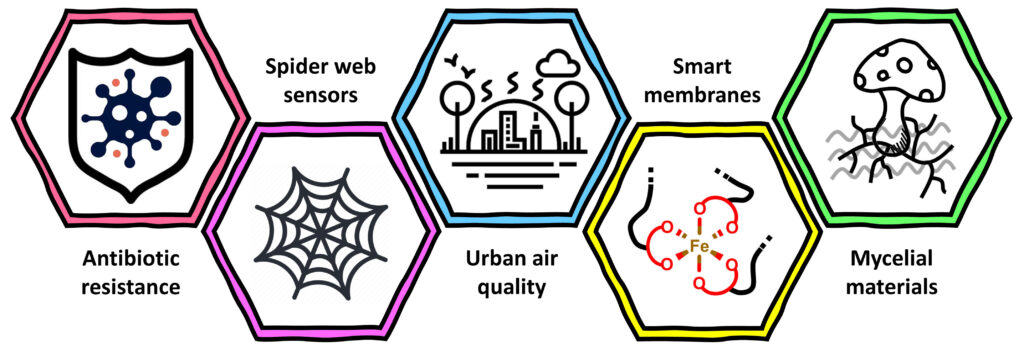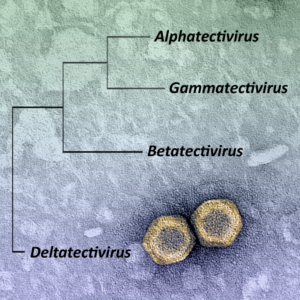BEMORE faculty members are working in the following areas

2022 REU students engaged in the following projects:
Blaney and Cusick: Copper-tolerant microorganisms contribute to the development and spread of antibiotic resistance
In aquaculture, copper-based antifouling paints and antibiotics are both used to ensure the health and safety of seafood products grown in high-density conditions. The co-selection of copper and antibiotic resistance in aquaculture operations represents a major public health concern that also impacts grand challenges in food security. The main objectives of this project are to (i) determine whether copper-based antifouling paints select for antibiotic resistance and (ii) identify the biodegradation kinetics and transformation products of three highly-important antibiotics used in US aquaculture (i.e., oxytetracycline, sulfadimethoxine, ormetoprim). We will evaluate these objectives in batch reactors containing A. macleodii cultures, other marine organisms, copper-painted and unpainted coupons, the antibiotics of concern, and marine water matrices. We hypothesize that copper-treated coupons will select for microbial communities with different genetic and functional capabilities than unpainted coupons, increasing the presence of antimicrobial resistance genes and the rate of antibiotic metabolism in biofilms on the copper-painted coupons. To test the hypothesis, REU students will address the following research questions:
- How do gene expression profiles and antibiotic resistance differ in pure cultures of macleodii grown in the presence and absence of copper? Does continuous copper exposure increase antibiotic resistance? Can resistance be transferred to other marine bacteria?
- Are oxytetracycline, sulfadimethoxine, and ormetoprim metabolized by macleodii? What are the half-lives of antibiotics in aquatic systems containing copper-painted and unpainted coupons? Do antibiotic degradation products retain antimicrobial activity?
Example of Blaney’s work on antibiotics (click image to go to paper, email for pdf)
 Example of Cusick’s work with antibiotic resistance (click image to go to paper, email for pdf)
Example of Cusick’s work with antibiotic resistance (click image to go to paper, email for pdf)
The annual production of over 400 million tons of petroleum-based plastics presents environmental and sustainability challenges. One exciting alternative involves the use of filamentous fungi as a pivotal component in composite biomaterials or “mycelial materials”. Our central hypothesis is that genetic manipulation of fungal cell wall components and/or morphological features will lead to altered material properties when fungi are used in composite materials. To test this hypothesis, we will genetically manipulate fungal morphological properties and identify which parameters most affect mycelial material properties. Marten has extensive experience in genetic manipulation of fungi and development of methods to assess cell wall functional properties and fungal morphology (e.g., specific branching rate). However, innovative microscopy techniques are essential for assessment of other key aspects of fungal morphology, cell wall composition, and structural complexity of mycelial materials. The fluorescence and electron microscopy expertise of deCarvalho, Director of the KPIF, will facilitate insight into these properties. REU students will be trained in fungal biotechnology and imaging techniques to examine novel mycelial materials and answer the following:
- Using scanning electron microscopy (SEM) and transmission electron microscopy (TEM), how do deletions of important Aspergillus nidulans protein kinase genes (g., mpkA, prkA, pomA) impact mycelial network organization and cell wall thickness?
- Using confocal microscopy with fluorescence labeling, how do deletions of important nidulans genes (e.g., nrc2, sepH, pomA) impact cell wall composition and the degree of hyphal septation?
Delgado and Hennigan: Molecular transformations of biogenic VOC emissions: impacts on urban air quality
Natural emissions from vegetation can have a profound effect on urban air quality, especially when combined with anthropogenic air pollutants. Isoprene (2-methyl-1,3-butadiene) is the most abundant non-methane VOC and a key species involved in photochemical smog formation. Isoprene oxidation stimulates tropospheric ozone production and contributes to secondary organic aerosol (SOA) formation, decreasing air quality. The goal of this REU project is to characterize impacts of isoprene emissions on urban air quality, with a focus on SOA formation through the ALW-mediated pathway. To accomplish this goal, we will use paired measurements of aerosol and gas composition at the surface, along with detailed profiling of aerosol and boundary layer dynamics via remote sensing. In the eastern US, ALW is largely driven by sulfate derived from SO2 emitted from fossil fuel combustion. SOA formed from isoprene can be enhanced in the presence of highly acidic particles, although acidity is not usually a limiting factor due to the high aerosol sulfate levels (derived from H2SO4) in the eastern US. Isoprene emissions in the eastern US are highly seasonal, with peaks in the summer, underscoring the suitability of this summer REU project. We hypothesize that isoprene SOA formed through aqueous pathways (aqSOA) is controlled by the complex interplay of anthropogenic and biogenic emissions with unique urban meteorology. The specific research questions to be addressed are as follows:
- How does the quantity and fraction of reversible aqSOA depend on aerosol composition? How does aqSOA formation in urban areas depend on gases that alter aerosol pH, such as ammonia? Is the fraction of isoprene SOA increasing in urban PM in the eastern US?
- Does the urban heat island enhance or diminish isoprene SOA formation? Which meteorological conditions promote reversible aqSOA? How are trends in eastern US climate related to trends in SOA?
Example of Hennigan’s work on aerosols (click image to go to paper, email for pdf)
Example of collaborative work from Delgado and Hennigan (click image to go to paper, email for pdf)
Hawn and Reed: Spider webs as natural, low-cost, and effective air quality sensors in urban communities
Top-down air quality monitoring efforts have resulted in significant improvements to US air quality over the last 50 years; however, the Environmental Protection Agency recently rolled back 19 key air quality regulations, such as the Mercury and Air Toxics Standards Rule. States can set stronger regulatory limits than those in the Clean Air Act if they justify the need for higher standards. However, the monitoring equipment needed to confirm air quality is expensive, and federal/state-based monitoring stations are sparse (i.e., region level) and do not fully protect the citizens most affected by poor air quality (i.e., community level). In fact, communities of color consistently have lower air quality than white neighborhoods. For these reasons, we propose expanded efforts in air quality monitoring through an integrated public science project, Spidey Senser, which will fill data gaps in urban air quality and connect REU students with community members. With these economical, spider web-based bioindicators, we aim to measure air quality in urban neighborhoods. In particular, we hypothesize that the Spidey Senser project will identify hotspots of metal pollution near major sources. REU students will answer following questions:
- Are metal concentrations in spider webs collected within a half-mile radius of the Baltimore Refuse Energy Systems Co. incinerator higher than those collected within a one-mile radius?
- How do metal concentrations in spider webs collected within a half-mile of I-95, a major highway in Baltimore, vary from suburban to urban neighborhoods?
Kelly and Leach: Switchable three-dimensional metal-polymer structures for controlled release of bioactive molecules
The development of switchable smart materials that are compatible with modern fabrication methods will advance the fields of self-regenerating materials, controlled release of bioactive molecules, and many others. We propose that metal-polymer structures which morph, regenerate, or dissemble in response to external stimuli will provide transformational advantages over conventional materials. In this project, REU students will investigate the innovative concept of switchable metal-organic polymers (SMOPs) that can be printed into engineering-grade parts, fabricated into tough membranes, and spun into strong, flexible fibers. The objectives of this REU project are to (i) synthesize SMOPs using condensation polymerization from commercially available co-monomers, (ii) optimize SMOP processing (e.g., 3D printing, electrospinning, membrane casting), (iii) characterize SMOP material properties (e.g., mechanical testing, swelling, degradation), and (iv) test stimuli-responsive SMOPs in controlled release applications, such as composite materials that only release the necessary amount of insecticide or orthopedic implant coatings that deliver drugs directly to the target. REU students will answer the following questions:
- How can SMOP synthesis be optimized using commercially available monomers? What is the chemical structure and molecular weight distribution of SMOPs? Which photochemically active chelators or co-monomers can be incorporated in SMOPs?
- What range of mechanical properties and controlled release rates are possible with SMOPs? Does materials processing alter SMOP mechanical or controlled release properties? Can SMOPs be used in composites to reduce cost, tune bulk material properties, or selectively deliver different molecules using orthogonal stimuli?
Example of Kelly’s work on photoactive smart materials for controlled release (click image to go to paper describing naphthalimide photoredox chemistry, email for pdf)





